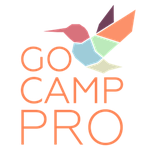Simplifying Staff/Supervisor Communication: Get More Done at Camp
Ellie Middleton’s “What by When and Why” framework helps leaders give clear instructions. It reduces confusion by focusing on three parts: what needs doing, when it’s due, and why it matters. This method cuts anxiety, speeds up tasks, and makes workplaces more inclusive.
Ellie created this to help when supervising folks with different kinds of neurodivergence, but this should be standard practice for every camp staff member's communication.
Why Clear Communication Matters
How Vague Instructions Cause Stress
Many people struggle with unclear requests. Phrases like “ASAP” or “review this” force employees to guess what’s needed. For neurodivergent workers, this guessing game wastes energy and causes stress. Middleton’s own burnout from vague tasks inspired her framework.
The Three-Part Framework
When you ask someone to do something, be super clear about these three things:
1. WHAT: Tell them exactly what you need them to do.
Instead of: “Look over the camp signup sheet.”
Try: “Check the signup sheet for missing parent emails.” (That’s the WHAT)
2. BY WHEN: Give a clear deadline. Don’t say “soon” or “ASAP.”
• Instead of: “Get it to me when you can.”
• Try: “I need this by 3 PM on Friday.” (That’s the BY WHEN)
3. WHY: Explain why it’s needed. This helps people understand the task’s importance and how it fits in.
• Instead of just giving the task…
• Add: “…so we can send the welcome packets before the weekend.” (That’s the WHY)
Benefits for Camp Staff Teams
Less Anxiety, Better Results
• more tasks finished on time when using the framework.
• drop in staff turnover after training leaders to use it.
Why Use This?
Less Confusion: Vague instructions (“handle this,” “touch base”) are confusing. People don’t know exactly what to do or when.
Reduces Stress: Wondering what someone really wants is stressful! Clear instructions lower anxiety.
Helps Everyone: While super helpful for neurodivergent folks (like those with autism or ADHD) who often think very literally, clear instructions benefit everybody. No more guessing!
Gets Things Done: People are more likely to do the task correctly and on time when they know exactly what’s expected.
Example: Camp Emergency Forms
• Old way: “Fix the emergency contacts.”
• New way: “Update all camper emergency forms (what) by Wednesday (when) so parents can review them at orientation (why).”
How to Start Using the Framework
Putting It Into Action
• Use it always: When giving tasks to your team, staff, or even board members.
• Ask for clarity: If someone gives you vague instructions, ask them: “Okay, so what exactly do you need, and by when?”
• Add the ‘Why’: Don’t forget to explain why the task matters. It helps motivate people.
Training Tips for Leaders
1. Role-play scenarios during meetings.
2. Use templates for emails and memos.
3. Ask employees to repeat instructions to check understanding.
Avoid Common Mistakes
• Don’t skip the “why”-it helps people prioritize.
• Don’t use jargon like “ASAP” or “touch base.”
The Bottom Line: Using “What by When and Why” makes communication clearer, reduces stress, and helps everyone work together more effectively. It’s a small change that makes a big difference.
Note from Travis: if you get emails from me, you know that I write at the bottom of my emails - "AI assisted in a lot of this writing". I have found that the ability to use AI for research and creative writing assistance has helped me actually produce more work and at a time when Camp Directors are overworked and overwhelmed, I want to get as much helpful information out there as possible. So I have learned to accept that I can do more valuable work when I take advantage of the AI tools available to me.
tl;dr: AI helped me write this.

